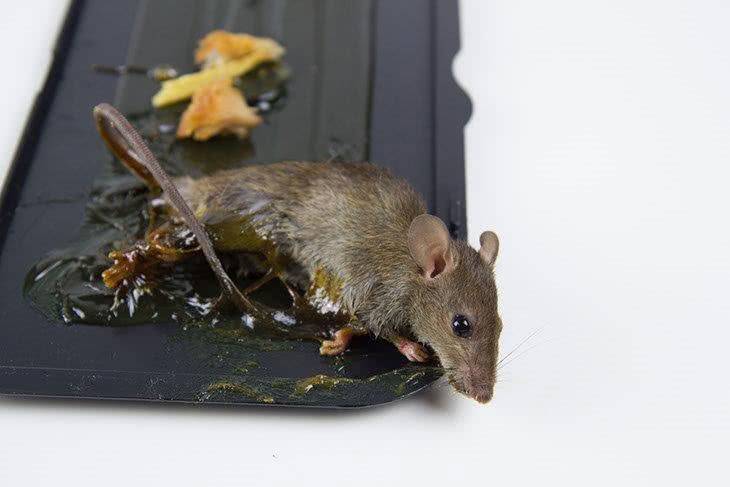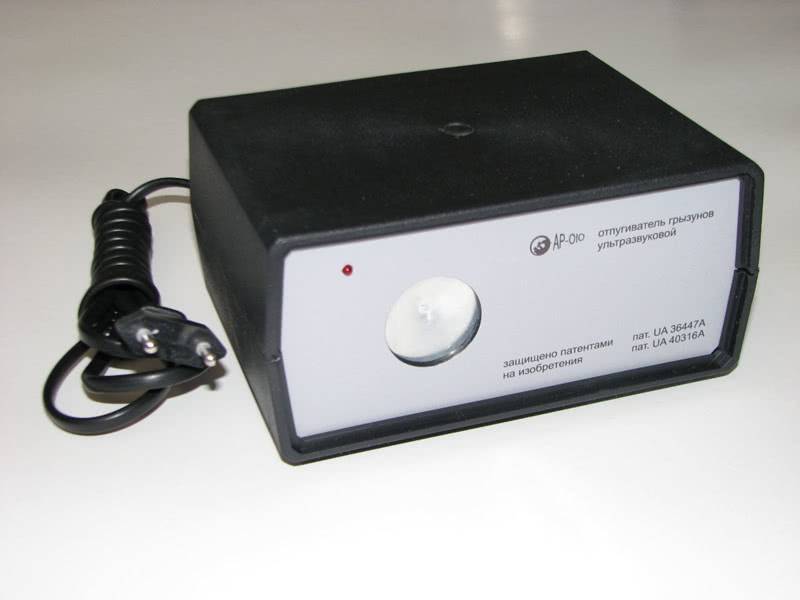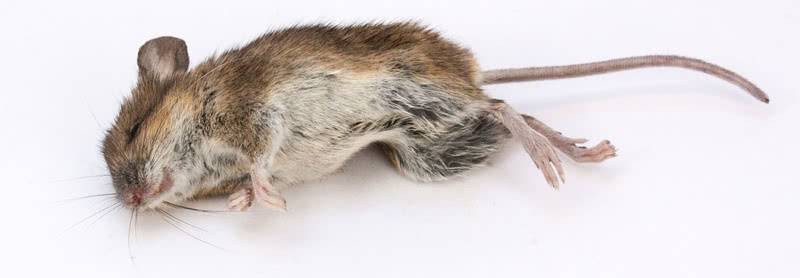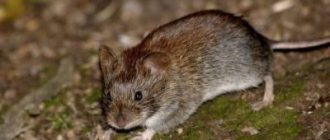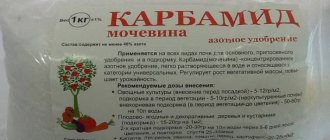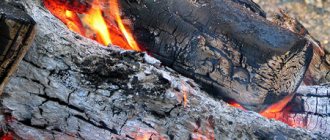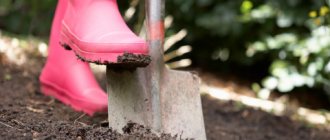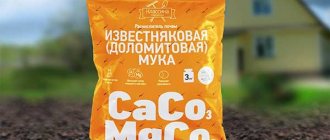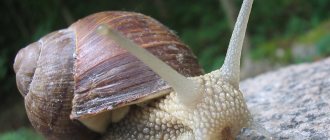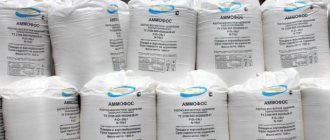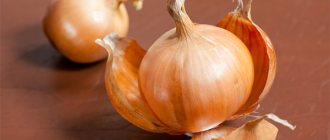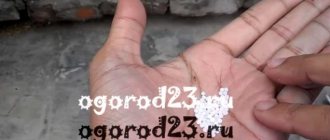One of the most common problems of a private house is the presence of rodents, which deftly penetrate the premises and manage all the bins, causing panic to the owners. Housewives scream hysterically at the sight of gray lumps, and courageous men are trying to fight this scourge by all sorts of means. There are mechanical devices, ultrasonic mechanisms, chemical poisons and folk remedies for mice in a private home.
It is quite logical that mice need to be eliminated as quickly as possible, because they damage property, spread all kinds of infectious diseases and create an unpleasant odor. But due to their inexperience, the owners cannot always identify the presence of these individuals in the house at the initial stages, when there are still few mice. But rodents reproduce very quickly, and when there are a lot of hairy ones, it will be much more difficult to remove them.
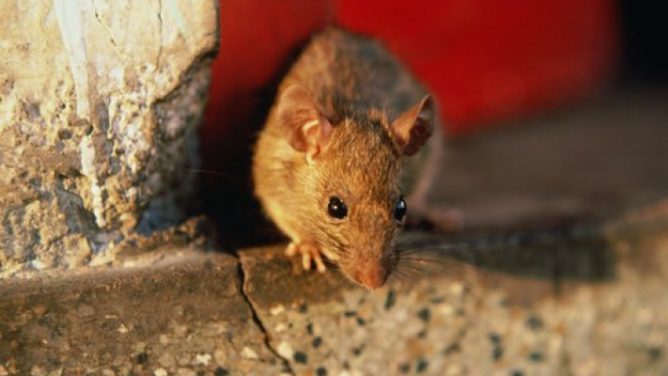
Getting rid of the wireworm
These worms live in the ground and damage root crops. It is difficult to deal with them, as they multiply quickly. Tar will help get rid of pests. To do this, two tablespoons of tar are diluted in 10 liters of water. Before planting potatoes, each tuber must be dipped in this emulsion. The wireworm will be deterred by the smell of tar and will not damage the tubers.
The same solution can be used to process all the holes and rows where it is planned to sow root crops using a spray bottle. After this proedure, the number of harmful worms is halved.
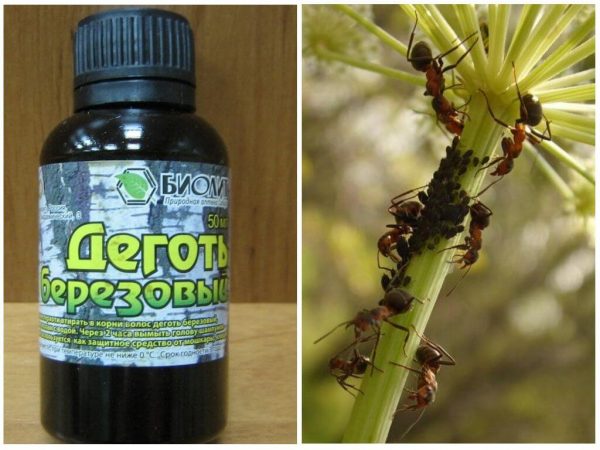

Precautions
Birch tar is a substance that has a low level of toxicity to humans and animals. If the concentrated drug gets on the skin, mucous membranes, it causes a burning sensation. To get rid of discomfort, you need to thoroughly rinse the surfaces.
The product is dangerous if it gets into the stomach or if the vapors are inhaled for a long time. Poisoning can be recognized by symptoms:
- dizziness;
- heavy sweating;
- migraine;
- nausea.
If the tar or solution has entered the digestive system, then the intoxication is removed by abundant gastric lavage. In order to quickly remove the remains of the poison from the body, it is necessary to drink an absorbent, sulfate laxatives. A doctor is consulted in case of severe poisoning and eye damage.
A specific aroma accumulates in the tissues of tomatoes, carrots and greens. Regular use of a soap-based solution will increase the alkaline reaction of the soil, which negatively affects yields. Store the drug in a closed glass container, out of the reach of children and animals. Due to the possibility of fire, it is forbidden to keep near heating devices and in direct sunlight.
Birch tar is a folk remedy that will be a good alternative to poisonous insecticides and repellents in the garden. A universal preparation will help in the fight against all types of pests. If you do not violate the instructions, then it is easy to avoid negative consequences.
Tar protects against rats, voles, mice
To solve this problem, you will need any grain (corn, wheat, barley, oats). Tar is added to it. So that all the grains are covered with it. Divide into small piles where mice live. Let the bait sit longer. You can remove it only when the piles will not decrease. This means that there are no more rodents, and there is no one to eat the bait.
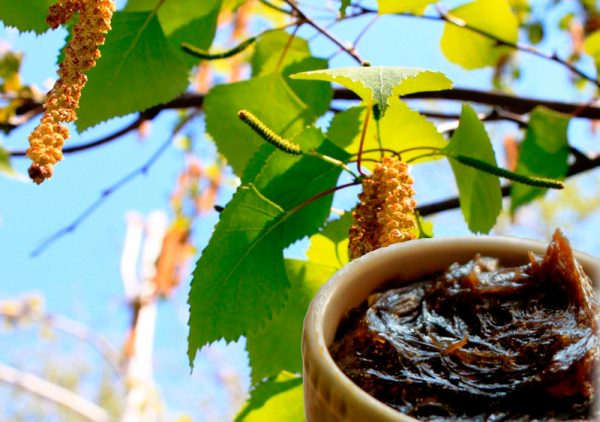

Rodent-unpleasant aroma
What smell mice are afraid of, people have determined by observation, trial and error. During the tests, it became known that rodents do not tolerate pungent odors. Scare away mice with pharmaceutical preparations, plants, essential oils, flammable liquids.
Singed wool
If the mice have settled in the house for a long time, they are not going to move out, you can apply one effective, not very humane method. Catch the mouse, set the tail on fire, release. The frightened animal will run into the burrow to its relatives. Rodents do not tolerate the smell of burnt wool. The mouse itself will drive away its congeners.
The smell of burnt cat fur frightens off rodents even more. Lightly trim your pet, give the rodents a nightmare. If there is no animal in the house, you can set fire to an old woolen product, or a skein of thread, put it in a hole.
On a note!
How to scare off mice if there is a cat in the house, even the laziest one, the question should not arise. Cat urine from mice is the best repeller. Its pungent smell is not tolerated by anyone, especially rodents. Also, a cat can eat a mouse if it catches it.
Plants
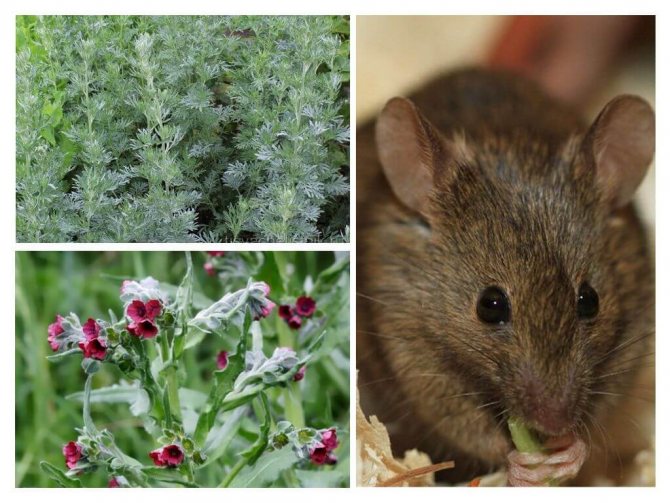

Plants from rodents Some plants not only scare away rodents with a smell, but also affect the well-being. Folk remedies for mice can be much more effective than professional ones.
- Sagebrush. The grass emits a strong odor that mice cannot tolerate. The branches of a fresh plant are laid out in places where rodents have been seen, in holes, if the location is known. The result is more effective if the room is fumigated with grass. Wormwood twigs are set on fire and walk around the apartment. The smoke makes its way into the smallest crevices, gets rodents anywhere. Instead of wormwood, you can use tansy. The effect is similar.
- Peppermint from mice is one of the most effective ways to control rodents. For humans, it is a safe and even useful remedy. Tear off fresh leaves of the plant, spread around the perimeter of the room. If mice have settled in the apartment, you can create an aura of a persistent mint smell using essential oil. Mint oil is dripped onto a candle and lit. A pleasant aroma will smell fragrant throughout the room, smell for a long time, drive mice crazy.
- Grouse bulbs. The root of the flower has an unpleasant smell of onions, which causes fear in rodents.
- Blackroot. Affects the nervous system of rodents. Mice hear him several meters away and try to hide quickly. Contact with this plant is fraught with severe mental disorders. The smell pursues the pest everywhere, gradually driving him crazy.
- Marsh Ledum. Contains poisonous oils. After contact with the plant, the mice receive a lethal dose. The rest of the individuals run from him wherever they look.
- Chamomile. Feverfew is an effective remedy for many pests, safe for humans. Tincture can be used. According to reviews, the effect is even better.
If it is impossible to find grass from mice, you can buy a collection or extract at the pharmacy, which will also work. But it should be scattered in larger quantities.
In addition to plants, you can use fruits - orange. The persistent orange aroma of the peel lasts for a long time, but does not cause discomfort in humans. Scatter the peel around the room. You can also add garlic cloves.
Pungent-smelling liquids
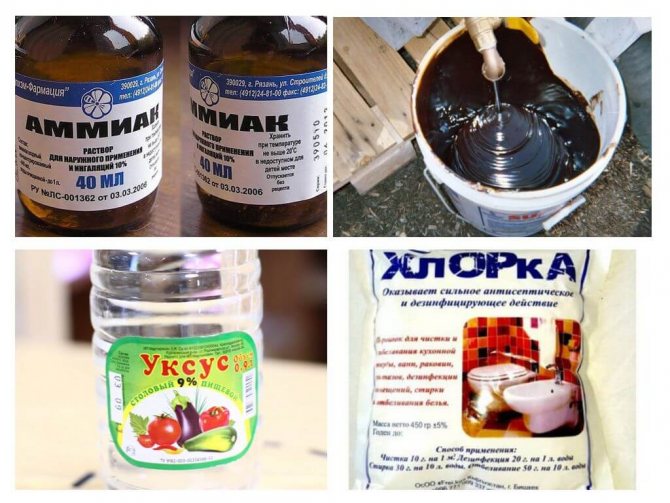

Products with a strong odor Effective products with a strong, pungent odor can scare away mice.
- Ammonia. They pour it in a saucer, put it near the mink, wipe the baseboards, the floor, the places where the rodents were seen. Prepare a solution. 10 ml of the preparation is poured into 1 liter of water. Wipe down furniture. These smells do not like mice, they try to stay away.
- Mouse vinegar is one of the most effective remedies available. The farm is always available, and if not, you can buy it at the nearest grocery store.Poured into a saucer, as is the case with ammonia, or diluted in water. Use an intolerable vinegar solution for cleaning floors, treating furniture. Concentration does not play a special role. The main thing is that the smell is persistent. The repellent helps only in this case.
- Mice are afraid of the smell of tar. But it is better to use it in a non-residential house, in the country, or when you can spend the night in another place. Moisten a rag, put it in places where mice like to be. The same effect from the smell of kerosene, gasoline, solvent, engine oil.
- Bleach and chlorine odor drives away all pests. The floors should be washed several times a week. Detergents with its content are suitable.
On a note!
Boric acid from mice is odorless and therefore dangerous to rodents. The poisonous substance is scattered over the floor surface. Upon contact with poison, the animal stains its wool. Tries to get rid of tongue contamination. The poison enters the stomach. To speed up this process, boric acid is mixed into food - bait is prepared. They use flour, grain, cereals, seeds, sausage, fried bacon, smoked sausage, and a crust of bread. This method of fighting rodents involves not scaring away, but attracting them to poisonous food.
You can use peppers to scare away. Spread in places where pests like to run. Pepper on the skin of the feet causes a burning sensation. Lime has the same property.
Fight against aphids and ants
The trunks of fruit trees should be wrapped with bandages soaked in tar. Then the pests will not climb on the branches. Shrubs should be sprayed with a spray bottle. The solution consists of 5 large spoons of tar and 10 liters of water. To protect vegetable crops, you need to pour a little tar on the sawdust. After a while, the sawdust mass will increase. They need to mulch the surface of the soil under the plants.
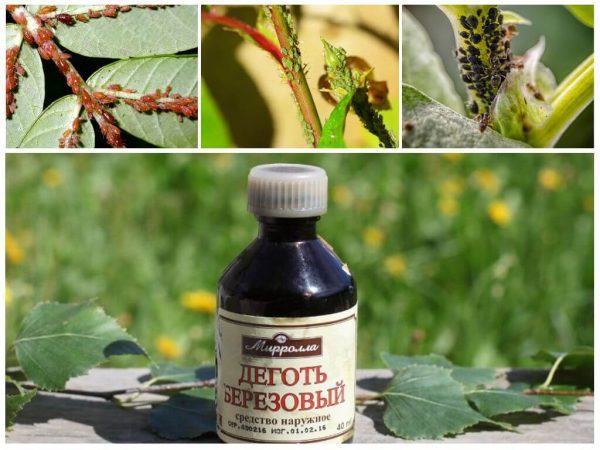

Application methods
You can not spray garden and horticultural crops from pests with tar after the formation of buds. It is better to hang bowls or spread rags soaked in a smelly substance between bushes of strawberries or potatoes, attach to tree branches.
There are many ways to use tar in the garden and garden. Often you have to focus on the advice of summer residents and gardeners. Scientists and agrarian institutions remain silent about the use of tar in agriculture.
Planting material processing
When planting potatoes, a classic tar solution is prepared, a hole is spilled, the tubers are soaked for 20-30 minutes. The drug is used to protect potatoes from wireworms.
Onions are handled differently. Sevok is put in a plastic bag, a few drops of pure tar are added, tied, shaken for a long time. The thick liquid is evenly distributed over the covering scales, and for a long time frightens off pests with an unbearable smell.
Application in the garden
Dill, parsley, lettuce, and other greens used for food are not sprayed with tar solution. The rest of the crops are watered from a watering can or processed with a broom. This way you don't have to constantly clean the nozzle of your garden sprayer, and the liquid will be constantly shaken up.
After flowering and the appearance of ovaries, soil can be spilled in the aisles. The result will be similar. Even better, under crops whose fruits do not touch the soil, mulch the ground with rotted sawdust soaked in a solution of tar - this will protect the plants from pests, weeds, and retain moisture.
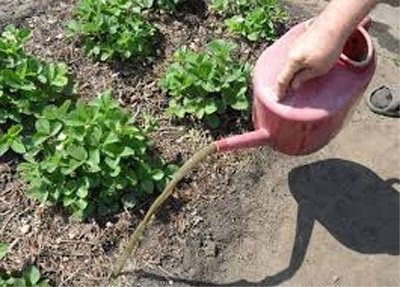

Use on the berry, in the garden
Bushes and small trees at the beginning of the growing season are treated with a broom against pests. Alternatively, open bottles with birch tar or rags soaked in working solution are hung on the branches.
In the middle of the season, rags soaked in the substance are tied to sticks driven in at a distance of 1-1.5 m from each other. Periodically, the material will have to be moistened in a tar solution.
This is how strawberry pests are fought.Berry bushes are low; in private plots, the culture is often grown using a carpet method. In order not to use chemicals, rags, soaked in tar solution, hung at a low height, are used from the bear.
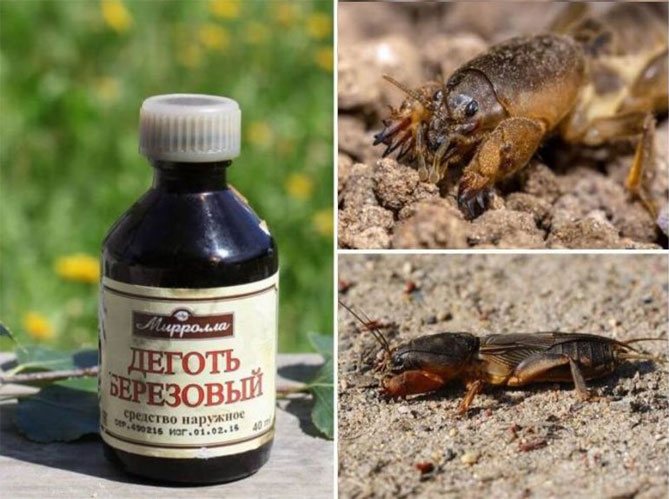

Scaring off warm-blooded pests
Wormholes are simply plugged with tar-soaked rags. To prevent mice and hares from gnawing the bark of fruit trees in winter, they are coated with the following mixture:
- water - 8 l;
- lime - 1 kg;
- cow dung - 1 kg;
- tar - 3 tbsp. l.
Some gardeners advise using "trapping belts" - pieces of cloth soaked in tar solution tied around the trunk. But the reviews about them are contradictory - from laudatory to abusive. On trees with "trapping belts" left for the winter, bark may peel off. This is likely due to the concentration of the working solution and how tightly the material is tightened.
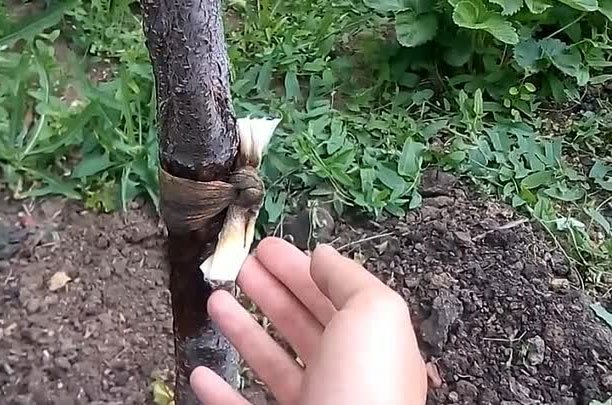

Tar obtained from birch occupies an intermediate position between chemical plant protection products and harmless, but ineffective folk methods. Whether to apply it on the site, it is worth weighing all the pros and cons.
What is it?
Birch tar - a liquid product of dry distillation of birch bark (light part of birch bark).
Outwardly, tar looks like a thick oily liquid of black color with a bluish-greenish or greenish-blue tint in the light and a very specific odor.
It contains more than 10,000 components that endow birch tar with antiseptic, antiparasitic and antimicrobial properties. Means possessing a whole range of healing properties, can be purchased without difficulty at any pharmacy.
Birch tar in gardening and horticulture - advantages and disadvantages
The natural remedy does not harm the human body. It has been used for many centuries for household purposes, non-traditional methods of treatment, cosmetic purposes, processing summer cottages, and a vegetable garden.
In addition to all its properties:
- antiseptic;
- anthelmintic;
- antimicrobial.
The properties of a birch resinous substance are due to its rich structure.
It is essentially a repellent and its main task in gardening is to repel insects. It should be noted that we are not talking about destruction. It is valuable that, having irrigated the plants, there is no doubt that the insects will not have a desire to lay eggs on the foul-smelling leaves.
In comparison with pesticides, the birch composition clearly wins in horticulture:
- it is harmless to humans;
- effective in repelling many pests in gardening, horticulture, the action is not limited to repelling insects;
- effective for rodent raids;
- insects do not get used to it;
- it is impossible for them to kill, but can only be scared away;
- not difficult to use;
- you can choose a convenient method of processing without even touching the plant;
- retains its effect for a long time (up to a month).
The substance has some disadvantages that should also be taken into account. Birch tar should not be applied directly to fruits, edible fragments of vegetables and fruits.
It is highly likely that when the product gets on the surface, it will affect the taste and smell of the crop. The constituents of the resinous liquid have a cumulative effect.
Note! In addition, bees and other beneficial insects - pollinators also lose interest in plants due to an unpleasant smell, so pollination does not occur. The consistency of the product is heterogeneous and provokes clogging of the sprayer, and also, if it accidentally gets on your clothes, it is impossible to wash off the birch tar.
Compared to the use of pesticides in the garden, birch tar has many advantages.
- This natural remedy is safe for humans.
- Helps get rid of many different pests.
- Easy to use independently, does not require the use of special equipment.Important! Always read the instructions for using birch tar.
- No addictive effect in insects.
- Long-term protection (from a month to the full growing season).
- Does not accumulate in plants in high doses.
- Does not destroy pests, but drives them out of the garden.
- Various applications (for example, without contact with the plant).
Despite the obvious advantages of birch tar, it also has disadvantages:
- The specific smell may not please the neighbors and owners of the site.
- Together with pests, it can scare away beneficial insects.
- Ingestion of fruit and edible greens can call into question the use of the crop for food.
- It is not recommended to use it indoors (for example, on indoor plants), since it is problematic to kill the pungent odor.
- It is necessary to work with concentrated tar carefully, observing the rules of interaction with substances of the 3rd hazard class.
- Tar solutions are difficult to mix with other compounds. To prevent the mixture from stratifying, it must be stirred periodically and used in the first few hours after preparation.
- Does not wash off if it gets on clothes. The metal parts of the sprayer can only be cleaned with organic solvents.
There will be no real harm from birch tar as such on the site - it is not poisonous for people (in medicine and cosmetology there are many drugs based on it), most pests scare away, not kill, and does not accumulate in large quantities in plants. However, there are some inconveniences and disadvantages when using it in horticulture and horticulture. Let's list some:
- A strong, unpleasant smell for many, which can scare away even neighbors and relatives from the site.
- It acts equally on both harmful and beneficial insects - you run the risk of being left without helpers in the garden and in the garden.
- Tar should not be applied to fruits and edible green mass, because their taste and smell deteriorate.
- For the same reason, its use in an apartment for indoor plants is excluded.
- Concentrated tar is toxic, it is necessary to prepare working solutions with it with precautions for substances of the 3rd hazard class.
- Working solutions (mixtures) are difficult to mix with other substances (due to the insolubility of tar in water) and quickly stratify at rest - they need to be used within an hour or two.
- Clothes stained with tar cannot be washed, and the metal parts of the sprayers are practically not cleaned (only with organic solvents).
You can see for yourself that such an unpretentious remedy, like birch tar, can rid your garden and garden of many flying and crawling pests - maybe it's worth trying?
Moles
What to do with insect pests is clear. But summer residents have other garden enemies, for example. With their active underground activity, they cause significant damage to the health, and sometimes the life of garden plantations.
A mole is an uninvited guest in any garden
To drive these uninvited guests from the site, mix 1 cup of tar and 1/3 cup of vegetable oil and soak pieces of rags with such an emulsion. After that, excavate all the mole holes that you find on the site, put an odorous rag in each move and cover the holes with earth. After such "aromatherapy" the moles will quickly leave the occupied territory.
Tips and tricks for choosing methods of vermin control at home
Anti-rodent measures should not adversely affect human health, therefore they are different for different premises.
10 ways to catch a rat in a house or apartment
Living spaces
In rooms where people are constantly present, they prefer various kinds of scarers and traps. Domestic predators can be of great help here.
Before starting a systematic struggle, it is necessary to strictly limit the access of rodents to food, it is necessary to identify the places of accumulation of rodents, cover up all suspicious holes and cracks with a mixture of concrete and broken glass, check ventilation shafts for rat nests, replace the gratings with them. It is very important that rodent control is carried out in all living quarters at the same time.
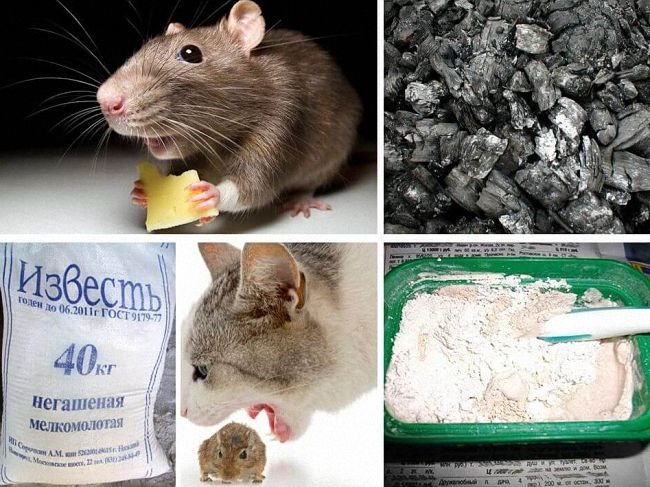

Sheds for animals
In utility rooms where animals and birds are kept, toxic substances, as well as various kinds of traps, will have to be abandoned. Here, such means as wood ash, fumigation with burnt wool, burdock scattered on the floor are better suited.
5 best ways to get rid of barn rats for good
Attics and basements
In rooms that are rarely visited by people and have a large area, killing rat traps have proven themselves well; potent poisons are also used here.
Sheds and garages
In utility rooms, strong-smelling substances are used, traps, and folk methods that kill rats (gypsum, dry putty, soda). The use of smoke bombs is possible.
Useful video
How to get rid of mice with birch tar in the video below:
- Read all comments from the beginning:
- 1
- 2
- 3
- 4
- 5
- 6
- 7
- 8
- 9
- 10
- 11
- 12
- 13
- 14
- →
Discussion in our group:
Elena Summer:
They also dislike stove ash and burnt wool.
Tatiana Arkhipova:
An ordinary mousetrap slams quickly and even if only its tail slams, the mouse will instantly die of fear. But what to do with a living mouse from a bottle? Yes, this is an old proven method, but I caught mice like that only once, because what to do with a captive. those frightened beady eyes.
Linda Staff:
If you use music or a rumble, our neighbors in the country will catch us. If you poison the mouse, they will bring it to our table, if you scare it with smells, then I will have to go to the city myself. If you catch it in a mousetrap, it will crush the mouse (fairy ..) , and often it breaks down. It remains to not store seeds or stocks in the winter dacha (then the mice gnaw everything in a row), patch up all the holes in the walls. And we also put 30 × 30 cardboard boxes on the floor in each room for the winter, on which we put a ring from special glue (sold) In the middle of the ring a piece of sausage or smoked bacon and that's it! We no longer see the horror film.
Elena Summer:
And my rabbits live, grain from the trough sometimes wakes up. As soon as the rabbits were brought immediately Larissa showed up, the bags of Rat Death, while helping.
Irina Strelkova:
they say that mice are frightened off by the smell of wormwood - spread its branches everywhere
Elena the Beautiful Rose:
Against mice I use birch tar, elderberry, mint, green granules in bags (I don't remember the name). Used rat poison once and for all.
How to choose tar?
Birch extracts are sold over the counter in pharmacies. It can also be purchased from sellers on the Internet in bulkier containers - barrels, cans. Often, garden stores put this product on sale to combat various pests.
When choosing, you should pay attention to some nuances. There are two types in total - birch bark and birch tar. Birch is made by pyrolysis of all components of the tree, birch - from young birch bark and is used in cosmetology, for medical purposes.
Note! Thus, two substances of different concentrations of oils are obtained from one plant species. It is birch that is more saturated and is used in gardening.
The recipe for a natural product is not difficult:
- A hole is made in the bottom of a large metal tub.
- Densely stuffed with bark, chips and other birch fragments.
- Cork tightly with a lid.
- One level below, a bucket or pan is driven into the ground to collect the resinous liquid.
- The tub should be over the pot.
- The top container is covered with wood and set on fire.
- After 5 hours, you can see the dripped tar.
In order to collect about three liters of valuable liquid, about 10 kg of birch components should be distilled.
Cooking tar is an invaluable experience, but it is necessary to understand that in industrial conditions it is possible to achieve a high degree of purification and release a more concentrated and effective component to the market.
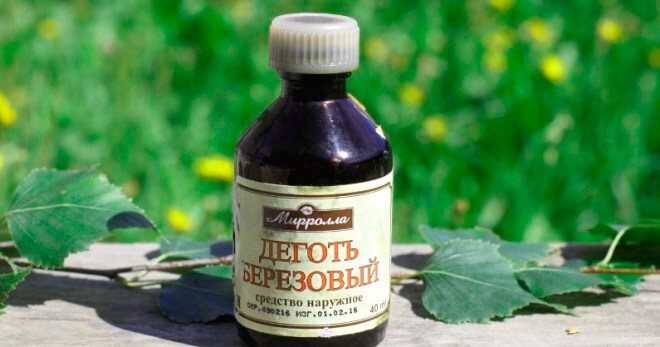

An important point - tar soap is practically useless in gardening due to the low content of the main active ingredient in the structure.
READERS RECOMMEND!
Say goodbye to pests FOREVER!…. In the fight against rodents and insects will help an environmentally friendly device that scares away rodents and insects….
Why don't mice like him?
For mice, an important role in their life is played by sense of smell. They rely on him in finding food, orientation in space, determining the location of the enemy. Even a pair for breeding is selected by rodents by smell. Therefore, harsh and excessively unpleasant odors force the animals to leave the places where they smell “bad” as soon as possible.
As stated above, Birch tar has a specific smell. It is very harsh, extremely persistent, defined in encyclopedias as yuft - the smell of leather, combined tanning, produced from cattle, horses and pigs.
Reference. The delicate sense of smell of mice does not tolerate the "aroma" of birch tar and makes them run away. However, not only mice, but also households can escape, therefore it is advisable to use birch tar only in non-residential premises or on the street.

